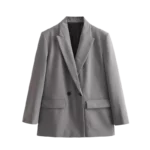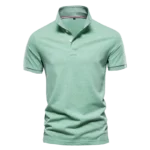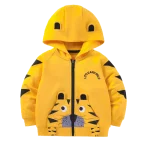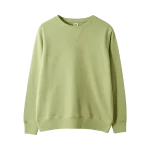Fabric and fit are the two pillars of any outfit. Equally important is color, and especially how you adjust and match various hues within your look.
Likewise, each brand or designer will adhere to a few basic rules of color ideas to create collections that feel harmonious. It’s an identical process followed by interior designers, artists, carmakers, and across almost all fields of product design.
Two Factors When Picking Outfit Colors
- The color wheel: to recognize variations and similarities among colors.
- Colour harmony: how to match two or more colors based on a variation of key formulas.
The Colour Wheel
The original order of color is red, orange, yellow, green, blue, indigo, violet, and is recognized as the ROY G BIV acronym. The theory suggests you match opposite colors found on the wheel. So for example blue with orange, or green with red, yellow with violet, and so on. In reality, these pairings are expected to be too much. Hence, you must also examine Hue, Saturation, and Brightness, to build a cohesive palette.

Hue, Saturation, And Brightness
Hue refers to a color’s exact location on the color wheel. For example, there are three types of orange placed around the edge of the color wheel. A hue can be produced by mixing a combination of the three primary colors (red, yellow, and blue).
Saturation relates to the power of each color
Brightness refers to the relative lightness of a color, from black (0% brightness) to white (100% brightness).
Mixing colors is where it gets somewhat tricky, but your overall aim is to cohesively mix contrast. It seems the opposite but the contrast performs your outfit look more attractive, and mating colors in the right palette creates affection. Think of it as building a ‘theme’ of colors, optimized by changing the hue, saturation, and brightness levels of each color in the palette.
To maintain a cohesive palette, you would typically pick two different colors of the three color properties (hue, saturation, or brightness), but keep the third property consistent.
Neutrals – Black, White, And Grey
There are three main color rules to be followed. Because the neutrals: black, white, and greys don’t have hue or saturation level they aren’t technically considered colors. This means that they can be joined with any other color without disturbing cohesion. The one anomaly is the brightness level of grey, which can vary, and should be color-matched to the rest of your palette.
Additionally, brown, tan, cream, beige, navy, and khaki are considered variants of neutrals, despite being colors in their own right.
1. Monochromatic
The colors of a monochromatic palette have a single hue but differ in brightness and saturation.
2. Complementary
Complementary color palettes are based on two distinct, complementary hues that tend to be there opposite to each other on the color wheel. Mix and match brightness and saturation within the two hues, whilst retaining the colors don’t have to be bold. For example think blue and orange, green and pink or yellow and purple.
3. Analogous
Analogous color palettes consist of two or three different but adjacent hues. Ideally, the saturation and brightness are kept the same but it’s fine to mix and match to a point.
Conclusion
Triad(ic) is a fourth term given to three shades in the color wheel that is an equal length apart from each other. For example pink, green, and orange. It’s difficult to master, so we recommend sticking to the three principles above before attempting beyond.
It’s wise to choose colors to suit your skin tone and the moment. The right half of the wheel is “warm” and perfect for spring/summer whereas the left side of the wheel is “cool” and better adapted to autumn/winter. All three color rules above with grey, black, and white, so don’t forget.
Why this debate about mixing and matching colors? In reality, these are just empty words, without a means to visually see and play with the outfit. Luckily using our platform you can visually see and filter each part. Head over our homepage https://dresoo.com/ choose a category and start playing our dress-up game with real clothes. You will be able to put in practice all the three rules showed above, to build an outfit to match your style.


































